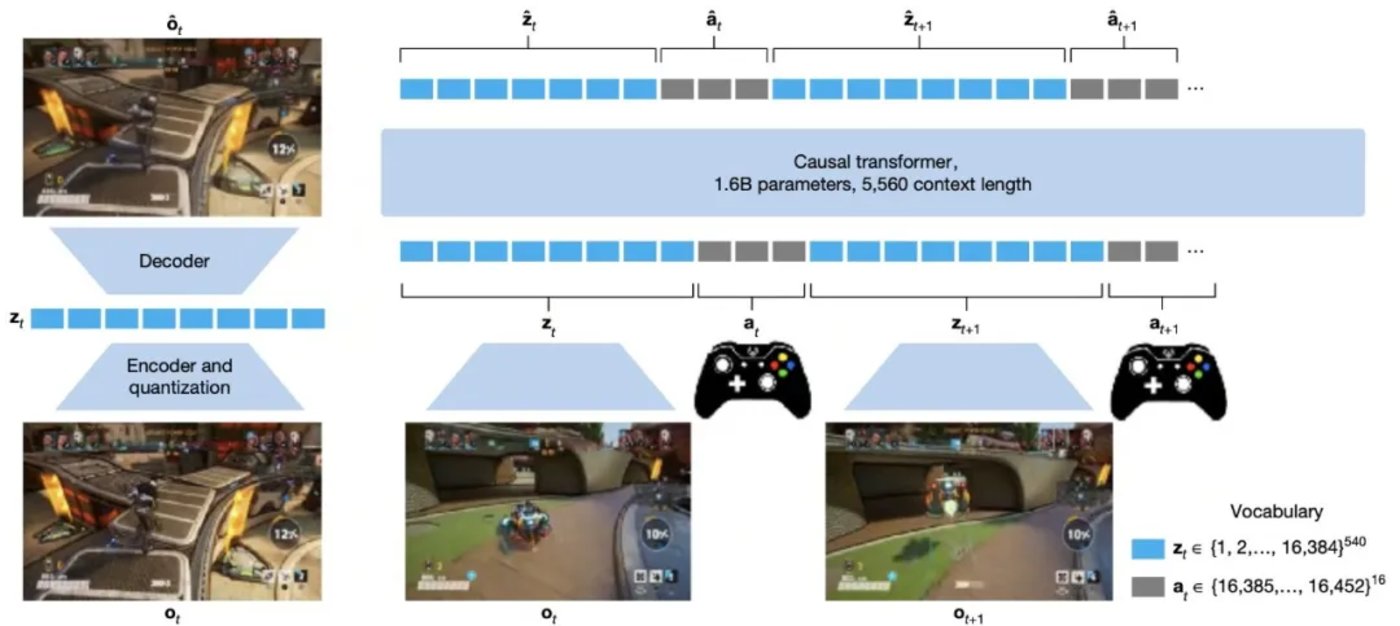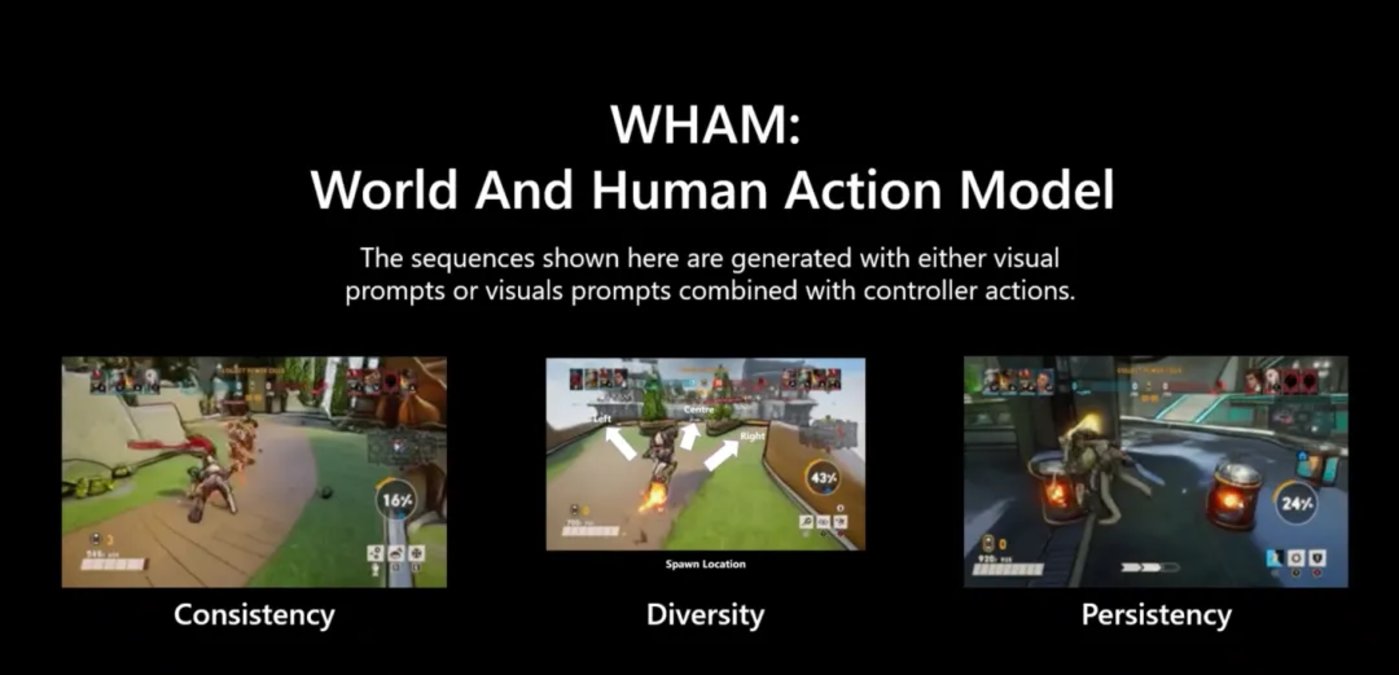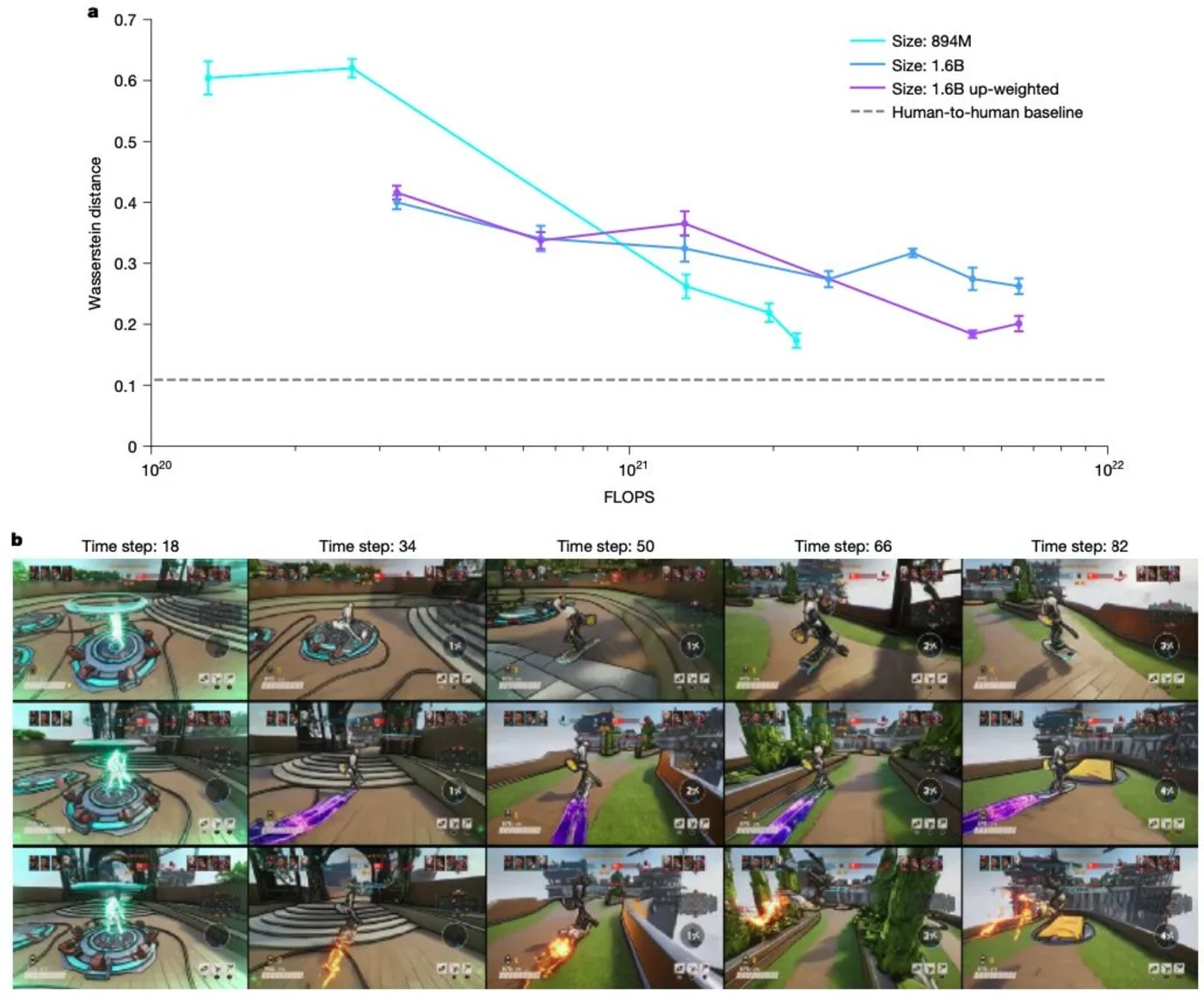Wen| Academic headlines
In today’s digital era, the creative industry is undergoing a transformation triggered by generative artificial intelligence (AI). From text and images to audio and video, AI is generating a variety of content at an unprecedented speed and scale, providing creative workers with new tools and ideas.
However,Integrating these technologies seamlessly into creative practices is not easy, especially in the complex and creative field of game development。
Game development not only requires generating novel content, but also requires maintaining the game world.consistency、diversityand user modificationssustainabilityA high degree of balance is achieved.
Recently, a research paper published in Nature, World and Human Action Models towards Gameplay Ideology reveals howUse generative AI models to drive the generation of gameplay ideas。

Paper link:
https://www.nature.com/articles/s41586-025-08600-3
The paper reports on a research team led by Microsoft Research that developed a generative AI model that can help video game designers iteratively design games——Model of world and human action(World and Human Action Model,WHAM), itsThe resulting robust 3D world follows the mechanisms designed for video games。
They believe that considering the fact that WHAM does not require any prior knowledge and can learn to generate sequences simply through training in playing games, this tool may be easily converted to generate levels from other video games, bringing new possibilities to the game development industry.
Can AI also do a good job in game creative development?
Video games account for the largest share of the entertainment industry, with billions of people around the world playing and buying video games. However, game development is a complex process involving multiple disciplines and skills, ranging from conceptual design and character modeling to level design and game mechanics programming,Every link requires a lot of time and energy from creative staff。Traditional game development processes are often limited by labor and time costs, making it difficult to quickly iterate and generate diversified game content.
Generative AI provides the possibility to solve this problem。By training AI models to learn a large amount of game data, new gameplay sequences, level designs and even character behaviors can theoretically be generated, thereby assisting creatives in more efficient game development.
However, the application of existing generative AI models in game developmentstill faces many challenges, such as the consistency and diversity of generated content and insufficient continuous support for user modifications.
Therefore, in this work, the research team aims toDevelop a generative AI model that better supports creative practices in game development。
In order to gain an in-depth understanding of the actual needs of game development creatives, the research team invited 27 video game designers from different game studio creative teams to conduct semi-structured interviews. These video game designers cover multiple areas of game development, including engineering, design and art.
During the interview, the research team used a method called“probes were designed”By simulating a fictional but specific game development scenario, it stimulates participants to think about the potential applications of generative AI in game creativity.
Participants actively shared their views and expectations on AI-assisted game creativity, believing that current AI solutions used to create video games lack the ability to generate many different ideas (divergent thinking), and emphasized thatWhile maintaining the consistency of the game world, the importance of achieving diverse ideas, as well as continuous fine-tuning of all aspects of the game through the design process (iterative practice)importance.
Specifically, participants believe that generative AI should be able to help them achieve the following goals during the game development process:
- Provide diverse content: AI models should be able to generate multiple different gameplay sequences and level designs to inspire creative people;
- maintain consistency: The generated content should be consistent with the overall style and mechanism of the game to avoid elements that are incompatible with the game world;
- Support iterative practices: Creatives want to be able to iterate by directly modifying the generated content, rather than just relying on text prompts;
- sustainability: User modifications to the generated content should be able to be retained continuously rather than disappear during subsequent generation processes.
Based on the results of user needs research, the research team developed WHAM.

Fig.| WHAM model (source: paper)
The WHAM model uses a large amount of gameplay data from human players in the 3D multi-player combat simulator “Bloodthirsty Edge”, including game visual images and controller actions. Adopt the Transformer architecture as its backbone network for sequence prediction, and use the VQGAN image encoder to encode images into discrete token sequences,By training real human gameplay data, WHAM can accurately predict the 3D structure of the game environment, the effects of controller actions, and the spatio-temporal structure of the game.。
Provides a new tool for game development
The research team found that WHAM was able to design complex 3D video game sequences that complied with the pre-existing mechanisms of “Bloodthirsty”, with significant diversity in level designs, and creative personnel could iteratively adjust the output. They also developed the WHAM demonstrator as a visual interface for users to manipulate and customize WHAM output.
To evaluate WHAM’s performance, they alsoA set of evaluation methods for generative AI models is proposed, focusing on the model’s performance in three key capabilities: consistency, diversity and sustainability.

In terms of consistency assessmentThey used the Fr chet Video Distance (FVD) indicator to measure the visual and spatio-temporal dynamics of the generated gameplay with real gameplay. By comparing the game screens generated by WHAM with the game screens of real players, it is found that as the model scale increases and computing resources increase, the FVD score gradually decreases, indicating that the consistency of the content generated by the model and the real game data continues to increase.
In terms of diversity assessmentThey used the Wasserstein distance to measure the difference between the model-generated action distribution and the real-world player action distribution. The results show that WHAM can generate action sequences similar to real players ‘behaviors, and the Wasserstein distance gradually decreases during the training process, indicating that the model can generate diversified gameplay while maintaining consistency.

Fig.| Diversity assessment of WHAM model
In terms of continuous evaluationResearchers evaluated the model’s continued support for user modifications by manually editing game images, inserting different game elements (such as props, characters, and map elements), and having WHAM generate new game screens under these edited images. Experimental results show that when the model is generated based on more edited images, the proportion of inserted elements that persist in the generated screen increases significantly, indicating that WHAM can better integrate user modifications into the generated game content.
Overall, through in-depth user needs research and rigorous model development and evaluation, the research team successfully developed a generative AI model that can support the creative practice of game development. The model excels in three key capabilities of consistency, diversity and continuity. It can generate game content that is highly consistent and diverse with real gameplay, and effectively supports users to modify and iterate the generated content.
The research team pointed out that the emergence of WHAM provides the game development industry with a new tool that can generate diverse and consistent game content,Inspire creative people and hopefully create a richer and innovative game experience in future games。At the same time, this research also provides useful reference and inspiration for the application of generative AI in other creative fields, and promotes the deep integration of AI technology and human creativity.
Although the application of WHAM in the field of game development has achieved remarkable results, it alsoThere are some limitations and challenges。For example, collecting and processing large amounts of real human gameplay data is a complex and time-consuming task that requires a large amount of time and resources; moreover, training and optimizing generative AI models require a large amount of computing resources and professional knowledge, which is important to the research team. The technical capabilities also put forward high requirements.
However, the research team also pointed out that with the continuous development of AI technology, WHAM’s model architecture and training methods can be further improved. It can not only generate more complex and intelligent game content at a low cost and efficiency, but also explore how to integrate WHAM with other game development tools and processes to improve the efficiency and creativity of the entire game development process.
We have reason to believe that in the near future, AI will play a more important role in game development and even the entire creative industry.



